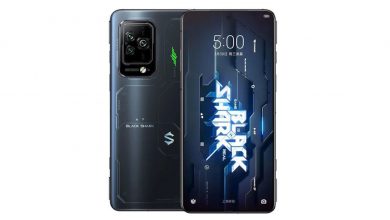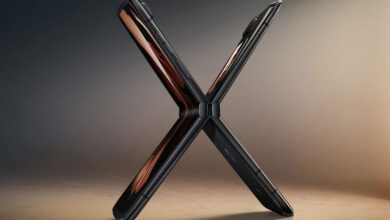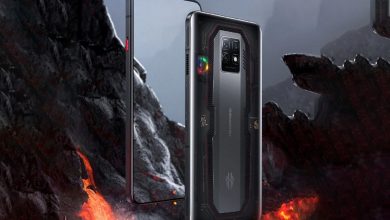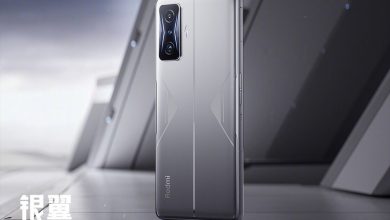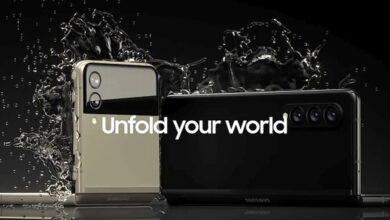Sony Xperia 5 III review: A compact flagship
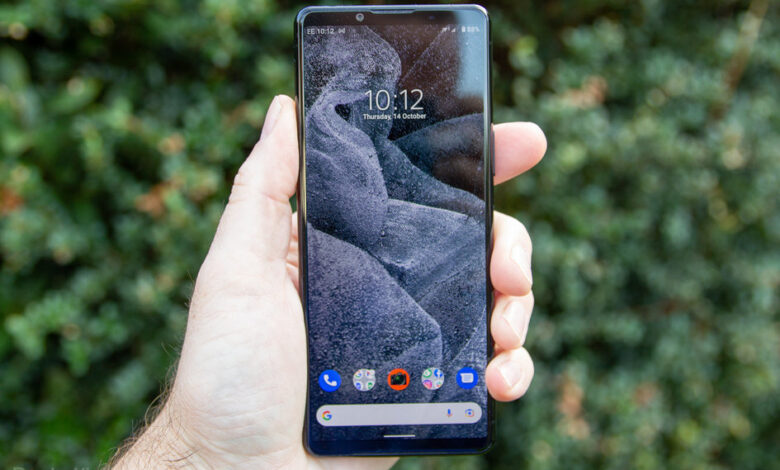
[ad_1]
(Pocket-lint) – If you cast your mind back a few years, Sony regularly released compact versions of its phones. It even gave them the name Compact, even though, at the time, phones weren’t as big as they are now.
With most flagship phones coming in large sizes there are few models that have true flagship power without finger-busting dimensions. The Xperia 5 III, however, is one such device.
Design and build
- Dimensions: 157 x 68 x 8.2mm / Weight: 168g
- Gorilla Glass 6 protection front and rear
- IP65/68 protection
The Xperia 5 III looks every inch the small version of the Xperia 1 III, which it effectively is. It’s the same quality, with a softly curved metal frame holding together the flat Gorilla Glass 6 panels front and rear.
The most striking thing about the design is the aspect ratio, with Sony using a 21:9 display – resulting in a tall phone that’s not as wide as rivals, making it easier to grip in one hand.
Some bezel is retained top and bottom, with the front camera sitting in the bezel at the top. Some might think this is a little dated, but we’ve always found this great for gripping the phone in landscape orientation when watching movies or gaming – but this is really a case of personal preference.
It is, however, a little slippery thanks to the glossy finish. And with more manufacturers moving towards slightly more tactile designs and frosted finishes, this is still a phone you’ll often have to wipe clean of fingerprints.
There’s a large camera array on the rear, the SIM tray on the left side – which, as always with Sony, can be opened with a finger rather than needing an ejection tool – and there’s a 3.5mm headphone socket on the top.

The right-hand side of the phone is busier, with the volume rocker, fingerprint scanner/power button, recessed Google Assistant button, and dedicated camera button. It’s the last of those that’s pronounced so it’s easier to find, while the recessed nature of the Google button means it avoids accidental presses.
There are stereo speakers on the Xperia 5 III, both front-firing from the edges of the display, and they will produce plenty of volume – although there’s some vibration through the case from the top speaker at higher volumes.
Sony has packed in a range of technologies to make the audio better – there’s DSEE upscaling, 360 Spatial Audio, 360 Reality Audio and Dolby Atmos support, as well as aptX HD. That’s on top of LDAC for Hi-Res audio.
Sony has its Dynamic Vibration system that will vibrate along with various media types using the haptic motors. It’s designed to make content more immersive, but we’ve always found it a little strange, having your phone buzzing when you’re watching a movie or listening to music.

As is long tradition for Sony Xperia devices, there’s water protection, which comes in at IP65/68 level, so there’s nothing to worry about if it gets wet.
Overall the quality of this handset is great. It’s a convenient size and one of a few devices offering power at a smaller size, the notable alternative being the Asus Zenfone 8. As we said of that phone, it makes a great phone for those who want something more pocketable – it’s an ideal phone for taking out hiking or cycling, for example, when you don’t want a massive bulge in your pocket.
Display
- 6.1-inch OLED panel
- 2520 x 1080 resolution (449ppi)
- High dynamic range (HDR)
- 120Hz refresh rate
- 21:9 aspect ratio
As we mentioned, the most distinctive thing about Sony’s phones is the 21:9 display. This helps them stand apart from most others – and while the Xperia 1 III is enormous with its 6.5-inch 4K display, the Xperia 5 III is much more manageable.
It offers a 2520 x 1080 resolution, which is perfectly fitting for a device this size, resulting in a nice and sharp 449ppi across this phone’s 6.1-inch diagonal display.

It’s an OLED panel, meaning rich colour and vibrancy, with Sony offering its Creator Mode designed to pull it back to more natural colours – but most users will likely prefer the Standard Mode, which has a little more pop.
There’s the option to have auto Creator Mode too, which will apply this more natural rendering in appropriate apps, like Netflix. There’s a slight difference in the colour tone, with Creator Mode being a little warmer and less saturated.
There’s also the option for video image enhancement – this is something Xperia devices have offered for a long time – which draws on Sony’s well-established experience in the TV market. Again, you can turn all these options on or off and find the settings that work best for you across your device to suit your preference.
It supports 120Hz fast refresh, too, but there’s no fancy adaptive options here: it’s either 120Hz, or you turn the feature off and return to 60Hz.

There’s little to criticise about the display, although we do have to regularly push the brightness up to get the best from it. It tends to dim down a little, and with this small tweak things appear a lot more lively. The Xperia lacks the peak brightness of a rival like the Samsung Galaxy S21 – so in direct sunshine you might find it not so proficient.
Content adapts to the display readily enough – something that Android is now very good at – but there’s no avoiding that the best experience comes from native 21:9 content. There are lots of movies out there, but at the same time this smaller display doesn’t quite have the wow factor of the Xperia 1 III when it comes to watching them because it’s that little more compact.
Hardware and performance
- Qualcomm Snapdragon 888 5G, 8GB RAM
- 128GB storage, microSD (up to 1TB)
- 4500mAh, 30W charging
As a flagship phone it’s no surprise to discover that the Xperia 5 III comes packing the Qualcomm Snapdragon 888 5G. That matches most of the flagship phones of 2021 and, as you’d expect, it skips along pretty solidly – delivering an excellent experience.
There’s no problem with handling more intensive games or apps and we’ve found it to run smoothly through long sessions of PUBG Mobile and Call of Duty Mobile. The phone can warm a little, but we didn’t find this to be quite as bad as the Zenfone 8 under similar conditions.

The pairing of power, that great display and the speaker performance does make the Xperia 5 III a good phone for gaming, although the size might leave some feeling that it’s a little crowded when it comes to on-screen controls.
Performance will drop a little during long sessions and we found some intermittent unresponsiveness from the edges of the display, meaning that some touches weren’t registered – but only towards the edges of the display.
There’s no wireless charging on the Xperia 5 III, but there is a 30W charger in the box. That makes the Xperia something of a rarity. Many manufacturers are leaving chargers out or shipping low-power chargers – but this offers decent charging speeds.
Sure, it’s not the fastest-charging phone out there, but Sony’s approach is all about battery health, wanting people to charge their phones in a slow and controlled manner to preserve that battery. The phone will learn your charging patterns and manage the charge based on usage patterns, so if you plug in overnight, it will trickle charge through to 7am or whenever you get up, rather than running up to full capacity as fast as it can (you can turn this off if you prefer, based on your own habits).

The battery capacity is pretty good considering that this is a compact device. The endurance will see it last through an average day and over the weeks we’ve been testing the Xperia 5 III, we’ve never been concerned about whether the battery will last.
It’s also worth mentioning that the Xperia 5 III still supports microSD, so offers expansion of storage if you want to carry more with you – on top of the 128GB standard onboard.
The side-mounted fingerprint scanner sits in the power button as we’ve seen on devices from Sony for some time. It’s fast to recognise and unlock, as long as your finger is clean and dry, but it is prone to false detection too, so it’s not uncommon to pull it from your pocket to find a message on the display saying that there has been too many failed attempts to unlock it, leaving you to use a passcode instead.
Cameras
- Triple camera system:
- Main (24mm): 12-megapixel, 1/1.7in sensor size, f/1.7 aperture
- Telephoto (70mm & 105mm): 12MP, 1/2.9in, f/2.3 & f/2.8
- Ultrawide (16mm): 12MP, 1/2.5in, f/2.2
- Front camera: 8MP, 1/4in, f/2.0
The camera on the rear of the Xperia 5 III is essentially the same as that on the Xperia 1 III, the only real difference is that the Xperia 5 lacks the time-of-flight sensor. We can’t, hand on heart, say that makes a huge difference to the experience.
Sony’s approach to cameras in recent years has been to pick on features of its excellent Alpha cameras and bring some of that experience across. You’ll find that things are a little more technical in the Photo Pro and Cinema Pro apps offered, which sets Sony at odds with most other smartphones.

From the Photo Pro app there’s a basic mode, but it can then expand the app into manual controls just like you’d get on a camera, with manual, programme, shutter and memory recall (the last of which is where you can save settings for quick access).
Xperia fans have told us they like this approach as it means that those who understand photography have something that’s a little more natural for them, rather than it all being wrapped into an AI experience where you just poke the button.
Indeed, Sony doesn’t offer a portrait mode, instead offering access to “bokeh” through the camera app. This is fine if you know where to look, but it’s strange that this is only offered on the rear cameras – on the front camera you have to select a different mode called “portrait selfie” which not only caters for bokeh, but wants to adjust the shape of your face and a whole lot more.
That juxtaposition seems at odds with the photography route pitched by the rear cameras – why not offer the same experience both front and back?
The front camera isn’t hugely exciting either. The portrait selfie mode isn’t very good at edge detection, usually leaving a clear band around your head, and low-light performance is way behind the competition too.
The bokeh option on the rear camera is a little better, but needs a fairly precise distance from the subject to work properly. As with other phones it’s using depth mapping and it really likes a distinct difference between the subject and the background for it to work.
Like the Xperia 1 III, the Xperia 5 III offers some great features, like burst shooting at 20fps, which will fill your gallery with frightening speed, but is especially good for shooting animals in motion so you can then select the perfect image. There are also focusing modes with lots of control options, including face and eye AF to make sure people are always in focus.
In good light the Xperia 5 III will give you some excellent images. The high dynamic range (HDR) system is interesting as it can take a little while to balance out the image – and often you can watch the sky move from overexposed to brilliant blue, so be sure to give the camera time to settle before you take that picture (for context it’s worth noting that the likes of Samsung or the Google don’t take so long to give you the best result).
The makeup of lenses remains interesting too. Sony refers to them as 24mm, 16mm, 70mm and 105mm – the first three common prime lenses that most enthusiast photographers will have in their kit bag. That equates to 1x, 0.7x, 2.9x and 4.4x in the app – which is language that smartphone users are more likely to be familiar with.
Like the Xperia 1 III there’s an interesting technological solution here, with that 70 and 105mm lens sitting in the same periscope unit on the back. This has a moving section to allow these two optical focal lengths, whereas other smartphones just offer one optical zoom length.
You can then zoom from 4.4x up to 12.5x with a pinch. In the settings there’s another detail which is the option for digital zoom or super-resolution zoom, the latter using AI to attempt to clean up the results. It’s not on by default as it takes longer to process and save.
Not that you’ll really notice. Using the AI super-resolution zoom gives noticeably sharper results when there’s detail to be processed – more noticeable when you’re zooming in on close-up subjects rather than something very distant – so we’d recommend turning it on for most shots where you want to go beyond 4.4x, but bear in mind that artificial sharpening can distort images in their own way too. There’s a couple of images below to show the sort of difference you’ll get.
AI SUPER RESOLUTION ZOOM
The zoom is good and it’s great to have 4.4x optical zoom, giving sharper results than you’d get without, accepting that the narrower aperture means it’s slightly less capable than the 2.9x, and will also lose some contrast in processing.
Frustratingly you can only zoom within each lens, you can’t pinch to move beyond the scope of that lens. We’d much rather be able to pinch through the whole range – it makes casual use much easier, with fewer taps.
Where the Sony doesn’t fare so well is in low-light conditions. Although it will take longer exposures to compensate, it can’t compete with the sort of night shooting that you’ll get on other flagships. Sony’s comeback might be that there are full manual options instead, but once you’ve put in the effort of using a tripod and all the rest of it, you might as well use an actual camera.
Ultimately, we’re happy with the results that we’ve got from the Xperia 5 III. In the main it’s a comprehensive camera offering with plenty of options. While camera fans might find plenty to engage with, those looking for a point-and-shoot experience might find they get a better experience elsewhere.
Software
- Android 11 at launch
- Some bloatware
Sony’s software offering on its Xperia devices has come full circle, now being pretty close to stock Android. That’s a positive point as Sony is mostly pushing Google services rather than other options or duplication – and that makes for a cleaner experience.
But you need to pay attention during setup, because Sony really wants to load your phone with other apps and services. Some of these are from Sony itself, but the majority you can opt out of at setup so they are never installed.

Some you can’t avoid – Facebook, LinkedIn, Sony’s own Music app, a Tidal trial – but we’re also frequently reminded that Sony wants to install its own News Suite, which we regularly deny.
One of the positive additions is Game enhancer. Like the gaming mode of many devices, this is designed to make the gaming experience better and allows you to customise what happens within each game. If you’re using gesture navigation you might find it limited as you can block those navigation swipes unless you engage the entire competition feature set – which then means no interruptions at all, you’re just focused on playing the game.
Overall it’s a smooth experience and there’s little to complain about, except that Sony doesn’t seem to be hugely aggressive with updates – and there’s no telling when Android 12 might arrive on this phone.
The Sony Xperia 5 III continues within its family line as an attractive device. It has benefits over the Xperia 1 III in that it’s a lot more compact and manageable. But it’s also pretty expensive in that position and there are innumerate options for devices with similar core hardware, but at a much lower price.
The fundamentals of the Xperia 5 III are good: there’s a comprehensive camera wanting to offer more to those keen on photography, but not delivering the same computational photography experience you might get elsewhere; the design and dust/water protection is good, and there’s plenty of battery life.
For some this will be the ideal phone, given its smaller-scale build, but the older Xperia 5 II might just offer you all those things too – without the inflated cost.
Also consider

Asus Zenfone 8
This one wants to own the small flagship space – and there’s no larger alternative. Asus put everything into this smaller device, with generally great results.
squirrel_widget_5908075

Samsung Galaxy S21
Samsung’s small handset doesn’t have quite the same build quality as the Sony, but offers a great display and plenty of power, with Samsung’s refined user experience. While Samsung’s main camera is good, Sony beats it on zoom.
squirrel_widget_3816714
Writing by Chris Hall. Editing by Mike Lowe. Originally published on .
[ad_2]
Source link



